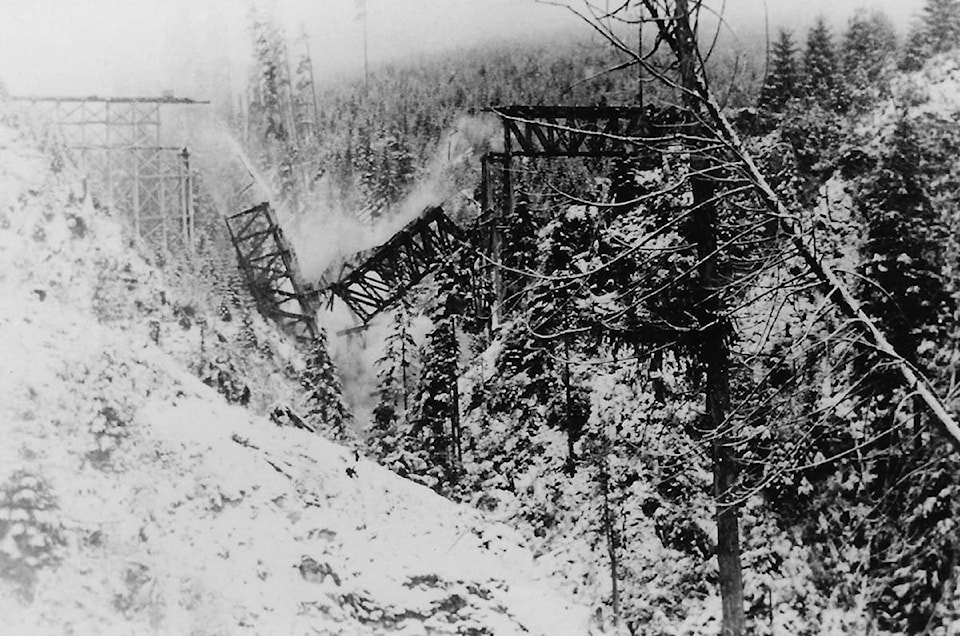We’ve published photos of the famed Bear Creek trestle before, but when we came across this photo of the actual explosion, which put an end to it, we thought it pretty dramatic.
Built in 1939 to carry logging locomotives over Bear Creek in the San Juan Valley, Bear Creek trestle was considered then to be the tallest wooden structure in the world at 245 feet.
Particularly noteworthy was that an Otter Point man, Kelso Blakeney, assisted Seattle’s Russell Mills in designing the structure.
Built by Malahat Logging, Bear Creek trestle served to support many millions of feet of logs in their journey on skeleton cars from the uplands of the Bear Creek valley to tidewater in the inlet.
By 1959 the trestle was showing its age and transport of logs had swung from rail to trucks, changing the face of the industry. In the interest of safety, the company terminated the bridge.
The Douglas-fir timbers used to build the bridge had been cut in 1938 at Blueberry Flats in Otter Point, by Boyd’s sawmill, then towed by Arthur MacFarlane’s tug JWP to North Vancouver to be creosoted.
After towing back to Port Renfrew they were offloaded at Beach Camp and then hauled up the valley to Bear Creek camp. Steam-powered Heisler and Shay locomotives were used to haul the rolling stock on the 165-kilometre railway system.
Children growing up in Port Renfrew and playing outside needed to look lively, as the trains swooshed right alongside family homes such as the Elliot House on Beach Road on their way to the pier to dump. The cut was mainly Douglas-fir, but included hemlock and cedar.
In 1948 B. C. Forest Products took over from Malahat Logging. A woods foreman there, Bob Robertson, soon became superintendent. If you stop in and see Jeannette at Wood Travel, it’s interesting to note that this world-traveller who directs the journeys of clients to all corners of the globe, grew up at an isolated Bear Creek Camp, the youngest daughter of Superintendent Robertson.
If you wonder how a wooden bridge could support such an enormous moving payload of logs for almost two decades, think about the words of one of our longtime forest industry giants, Howard Elder, who told us “Pound for pound, Douglas-fir is stronger than steel.”
It was under Bob Robertson’s stewardship that the pictured explosion took place, his objective to prevent potential hazards to backroaders.
•••
Elida Peers is the historian of the Sooke Region Museum.
